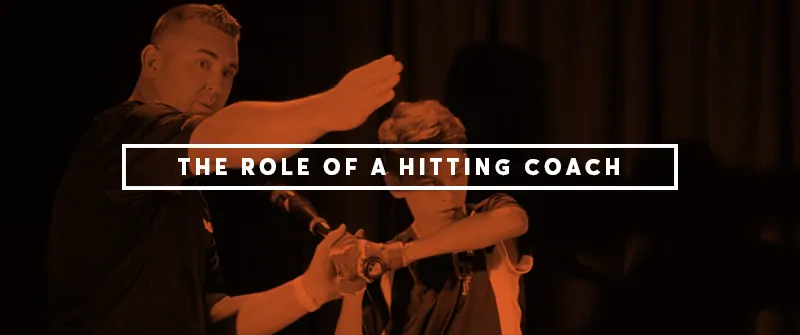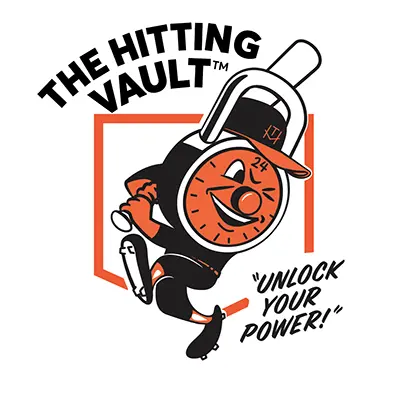What is the Role of a Hitting Coach?

Table of Contents
Over the past few years, teaching baseball and softball swing mechanics has become exponentially more science-based.
For some coaches, that’s been an empowering development. Innovations in measurement and analytics have given them valuable new insights into their players’ movements, helping them better understand what’s working and what needs improvement.
For other coaches, that science revolution has made teaching the swing more difficult. It’s challenged them to expand their knowledge of topics like data collection and the kinetic chain of the swing, and has all but forced them to embrace the use of the super-high-tech tools newly at their disposal.
But a couple of things are true for both groups: science is forcing coaches to re-evaluate their existing beliefs about swing mechanics, and it’s making communicating the intricacies of hitting more complicated than it’s ever been.
Baseball Data Revolution
As recently as a decade ago, terms like launch angle, exit velocity, torque and scap loading weren’t even in the lexicon of most elite-level hitting coaches.
Today, they’re used (and sometimes obsessed over) by coaches at every level of the game.
Data analyzers like HitTrax, DiamondKinetics and Blast Motion provide concrete evidence of what’s happening during the swing, significantly expanding the information a coach has to work with.
That’s a blessing and a curse, because having that much data at your fingertips can lead to information overload for your hitters.
While it’s true that some players — especially those at the professional level — are just as tuned into this data as their coaches, it’s also true that the vast majority of hitting coaches don’t work with professional players.
Statistically speaking, the chances are that you coach college or high school students, or even Little League or travel ball players. And most of the time, their capacity to understand and utilize high-level scientific information is limited.
Complex terms like “internal rotation of the humerus” will leave most amateur players scratching their heads. So while it’s tempting to share this treasure trove of new data, it’s important to remember that giving them so much information is not always necessary or desirable.
Hitters need understandable, actionable information that they can put into practice on the field or in the batting cage (without having a college degree in biomechanics).
Hitting Coaches Are Translators
That’s why the most important job of hitting instructors is translation. Our job is to continue to spend time learning the complex science behind the sport, understand how it relates to the players we’re working with, and know how to package it into language and drills that our players can actually use to get better.
For example, take the common cue “release your back side.” Most hitters have no idea what that means. It won’t help them the first time you say it, and it won’t help them the 10th time you repeat it.
They can’t execute something they fundamentally don’t understand. And if you try to teach that science, you’re missing the forest for the trees: it doesn’t really matter if they know what it means to release their back side; it matters if they can feel when they are or aren’t releasing it.
At The Hitting Vault, we use drills like the paint stick drill and the “don’t squish the bug drill” to teach this particular skill, and we use simple, easy-to-digest cues like “hop over the paint stick” and “un-anchor your back foot” to help translate the scientific concept of releasing the back side into an actionable movement they can relate to a physical feeling.
Here are three key things to keep in mind when you’re working with hitters.
Three Key Considerations for Hitting Instructors:
1. Make use of video. Most hitters are visual learners. Seeing their swing on video at full speed, as well as in slow motion, will help them understand what they’re doing better than a detailed verbal analysis.
For example, a hitter may feel like their stride is long enough to get to a good launch position, but seeing their swing in slow motion (and being able to pause at their launch position) will show them that they’re too narrow, and give visual spatial context to your instructions.
In other words, it helps them know the difference between narrow and just right.
2. Know how each hitter likes to be coached. Some coaches step onto the field with a “my way or the highway” mentality. Most of the time, that’s counterproductive to learning.
Instead, consider how your hitter wants to be coached. Do they need consistent encouragement? Do they like to have a more serious hitting session, or is it better to have some laughs and keep it loose?
Ballplayers are people, and everyone is different. Trying to force your players into your mold is putting your needs above theirs. It’s also ineffective, because figuring out what makes each hitter tick is how you’ll help them get the most out of their potential.
3. Do more drills and do less talking. Coach Lisle has a great short video clip about how hitting coaches need to speak less and run more drills. Obviously, there’s a time and place for instruction and Q&A, but many hitting coaches are constantly nitpicking every single swing. You’ve seen this coach in action…
- First swing: “You’re too narrow.”
- Second swing: “Lost your posture.”
- Third swing: “You squished the bug.”
- Fourth swing: “Your hands are going before your hips.”
Have a focus and don’t comment on every single swing. Your players will start to overthink and become tentative.
Resources
If you’ve read this far, then you probably already know this: it’s critically important as a hitting coach to continue expanding your knowledge by constantly asking the question, “How can I be a better hitting coach.” You should have the same drive to improve as you expect of your players.
Here’s a list of some other resources we have available to expand your knowledge of baseball swing mechanics and improve your skill and effectiveness as a hitting instructor.
- In this guide and video, Coach Lisle talks about how to use variations of drills to help your players understand and master movements.
- When you’re just starting to work with a young hitter, here’s the one thing they should learn first.
- In “How Many Reps,” Coach Lisle talks about how to identify the right number of swings for a particular player.
- Do you coach baseball and softball hitters? Should you be teaching them different movements? The answer might be different than you think.
- Do you train switch hitters? Here are some of the most important factors to keep in mind as your approach this always challenging task.
Frequently Asked Questions
Here are a couple of the most frequently asked coaching questions we hear from hitting instructors.
As this article outlines, being an effective translator is the most important skills you can master as a hitting coach. But a skill that works in conjunction with translation is patience.
There are going to be times (and if you work with multiple hitters, it’s going to happen every day) where they just don’t “get” what you’re saying. Hitting is such a complex movement, and you may need to communicate an idea three or four different ways in order to figure out what makes it click with that particular hitter.
1. Thinking they know everything already. Don’t be a coach that thinks they have hitting (or any part of the game, for that matter) all figured out. You should be actively trying to learn new drills, new ways of communicating, new ideas and new philosophies of hitting.
2. Skipping the mental side. Yes, mechanics are huge. But are you also training your hitters to deal with pressure and failure? Are you teaching them how to have a plan for (and learn from) every at bat? A hitter can develop the perfect swing mechanics, but if there are problems between the ears, all that hard work might be for nothing. Understanding and working on the mental side is a crucial aspect of coaching hitting.
3. Not looking at the root of the problem. Many hitting coaches see something they don’t like in a swing and work on that one issue rather than thinking about the big picture. Instead of treating the symptom, aim to diagnose the disease.
For example, if a kid has very poor extension, rather than doing drills to work on extending in the right direction, look back earlier in the swing to identify what’s causing the poor extension in the first place. Is it their launch position, their bat path/swing plane, or all of the above? The swing is a sequence, so evaluate it holistically.
4. Jumping right into full swings. When working on mechanics, you’re essentially rewiring what the body is used to doing, teaching new motor skills, and developing new muscle memory. So make sure you take the time to work on each part of the swing.
This might involve drills that don’t necessarily involve a bat, going through the swing in slow motion, and/or pausing at certain points in the swing to help the player learn the proper positions and movements. This will be more beneficial than just jumping into full swings.



